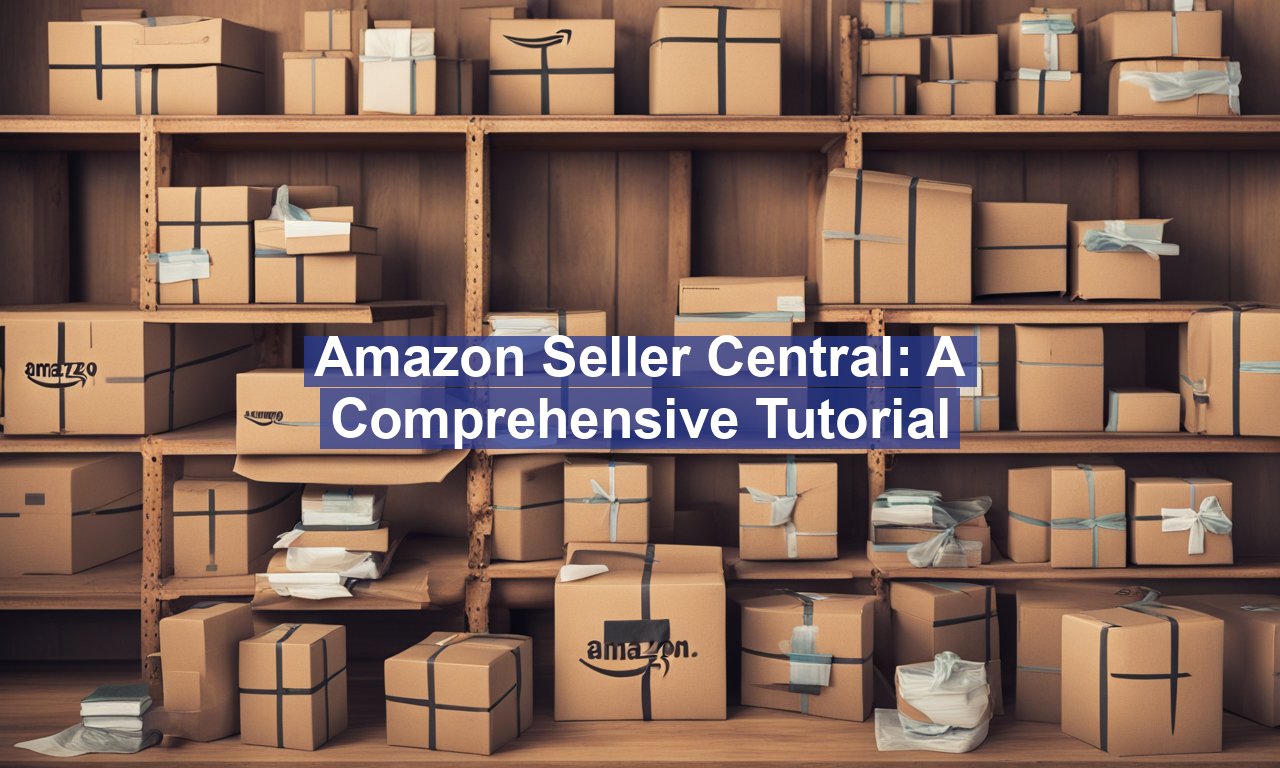Amazon Seller Central: A comprehensive tutorial, have you ever dreamed of turning your garage business into a bustling e-commerce store? Are you looking to tap into Amazon’s extensive customer base & boost your sales? If so, you’re in the right place. Throughout this blog post, we’ll guide you through the intricate world of Amazon Seller Central. From setting up your seller account to optimizing your product listings, this comprehensive tutorial will equip you with the knowledge and skills necessary to succeed in one of the world’s largest online marketplaces.
What is Amazon Seller Central: A Comprehensive Tutorial
Amazon Seller Central (ASC) is a web platform where third-party sellers can manage and sell their products directly to Amazon customers. Unlike Amazon Vendor Central, which involves selling products directly to Amazon, Seller Central allows you greater control over your inventory, pricing, and customer relations. Whether you’re a seasoned seller or just starting, understanding Seller Central is crucial for maximize your business power.
Setting Up Your Amazon Seller Account
First thing first: you need to set up your seller account. Here’s a step-by-step guide to do your starting:
1. Choose Your Selling Plan
Amazon offers two main selling plans:
- Individual Plan: Best suited for those who plan to sell fewer than 40 items every month. This plan asks for payment of a fee per item sale.
- Professional Plan: Ideal for those who scheme to sell much than 40 items a month. It charges a monthly subscription fee but offers enhanced benefits.
Determine which plan suits your business needs and budget.
2. Register Your Account
Go to the Amazon Seller Central page and click on “Sign up.” You’ll need to provide some basic information such as your business name, address, and tax details. Do sure you have all the necessary documentation ready for a smooth registration process.
Navigating the Dashboard
Once registered, you will land on the Amazon Seller Central dashboard. Here, you’ll find a wide array of tools designed to help you manage your business. Let’s break down some of the necessary sections:
Inventory
This section allows you to manage your products. You can add new products, update existing listings, and check your inventory levels. Don’t forget to regularly update your inventory to avoid stockouts or overstock situations.
Pricing
Competitive pricing is key on Amazon. Use the pricing tool to adjust your prices based on market demand & competitor pricing. Amazon also offers automated pricing tools to make this process easier and more efficient.
Advertising
Amazon offers various advertising options such as Sponsored Products, Sponsored Brands, & Display Ads. Leveraging these can significantly boost your product visibility and sales. Consider starting with Sponsored Products, which may appear right in the search results.
Adding and Optimizing Product Listings
Now let’s talk about the bread and butter of any Amazon business: the product listings. Optimizing your product listings is crucial for driving traffic and converting browsers into buyers. Here’s how you can do it:
High-Quality Images
Ensure your product images are high-resolution and showcase your product from multiple angles. AMZ recommends at least 1000 pixels on the lengthy side for optimal zoom capabilities.
Compelling Titles
Your product title should be clear and include the necessary keywords. Keep it within Amazon’s character limit and use natural language. For instance, “Wireless Bluetooth Headphones with Noise Canceling, Black” is both descriptive & keyword-rich.
Detailed Descriptions and Bullet Points
Provide thorough product descriptions that answer potential customer queries. Break down features & benefits into bullet points to make it easy to read. For instance:
- Long-lingering battery life – up to 20 hour of playtimes
- Advanced noise-canceling technology
- Comfortable, adjustable ear cups
- Built-in microphone for hands-free calls
Utilize Backend Keywords
Amazon (AMZ) allows you to add keywords in the backend of your product listing. These are not visible to customers but help in improving searchability. Use keywords that are relevant to your product but not already used in the title or description.
Handling Orders and Customer Service
Great, you’ve got your products listed. Now what? Here’s what you need to know about managing orders and customer service:
Order Management
Amazon provides an order management interface where you can view, process, and track orders. Make sure to regularly check this to ensure timely fulfillment.
Shipping and Fulfillment
You have two main options for shipping:
- FBM: You handle storage, packaging, & shipping.
- Fulfillment by Amazon (FBA): Amazon handles storage, packaging, and shipping for you, but it comes at a cost.
FBA can save you time and ensure fast shipping, which often translates to higher customer satisfaction.
Customer Communication
Amazon emphasizes customer satisfaction. Ensure you respond to shopper inquiries promptly & professionally. Positive customer interactions can lead to good reviews, which improve your product rankings and attract more buyers.
Monitoring Performance Metrics
Finally, consistently monitor your performance metrics to understand how well your store is doing. Amazon provides several key performance indicators (KPIs) to track:
Sales Performance
Keep an eye on your sales data, which includes units sold, total revenue, and profit margins. Adjust your strategies based on this data to optimise your performance.
Customer Feedback
Customer reviews & ratings are essential for building your reputation on Amazon. Aim for positive reviews by providing excellent products and stellar customer service.
Account Health
Amazon tracks the health of your account based on various factors such as order defect rate, cancellation rate, and late shipment rate. Maintaining a healthy account ensures you remain in good standing and avoid potential penalties.
By following this comprehensive guide, you’ll be well on your way to becoming a fruitful Amazon seller. Repose in mind, that consistency & attention to detail are key. For more in-depth tutorials and continuing education, consider visiting resources like the Amazon Seller Central knowledge base or reputable e-commerce business blogs.


